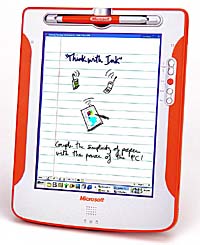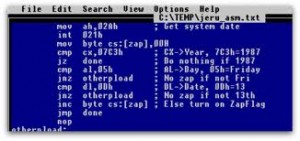Microsoft
Microsoft’s First Hardware Product
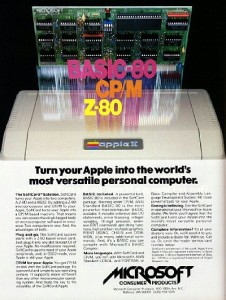
Microsoft announces its first hardware product, the Z80 SoftCard. The SoftCard is a microprocessor that plugs into the Apple II personal computer allowing it to run programs written for the CP/M operating system. CP/M was a very popular OS for early personal computers along with much of the software written for it. In particular, the word processor WordStar is so popular that people will purchase the SoftCard and a companion “80-column card” just to run it on the Apple II. At one point, the SoftCard product will bring in about half of Microsoft’s total revenue. It will be discontinued in 1986 as CP/M’s popularity declined.
Microsoft Bob is Spawned
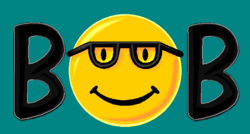
Microsoft releases their epically ill-fated software package, “Bob“, whose name will forever live in infamy. Given the tide of popularity and visibility Microsoft was riding on the way to releasing Windows 95 later that year, Bob was the first highly visible flop from Microsoft. Future flops from Microsoft included Windows ME, the Zune, and Windows Vista to name a few. While Bob was “killed” only a year later, many of the ideas that went into Bob were salvaged by Microsoft, most notably the “Clippy” assistant, which was perhaps as equally as derided by computer users. Read this excellent write-up on the history of Bob.
20-Year Old Bill Gates Gives Address

Bill Gates gives the opening address at the First Annual World Altair Computer Convention in Albuquerque, New Mexico, giving a talk about software piracy.
In early 1975 Gates had been a student at Harvard but along with Paul Allen developed a version of the BASIC language for the MITS Altair computer. They demoed it to MITS in March of that year and MITS agreed to distribute it then hired Gates and Allen to continue development. Gates and Allen soon moved to Albuquerque to form Microsoft (originally “Micro-Soft”) since MITS’s headquarters was also located in Albuquerque.
Bill Gates Announces First Tablet PCs
A little over 4 months after announcing that Tablet PCs would be the future, in his keynote at the 2001 Windows Hardware and Engineering Conference (WinHEC) Bill Gates announces Tablet PC support from Acer, Compaq, Fujitsu, Sony and Toshiba. Microsoft’s Tablet PC initiative made a lot of noise and had hardware manufacturers salivating at the thought of a new category of computers to sell after the post Y2k downturn in sales, but for a variety of factors never gained mainstream acceptance. It was not until Apple introduced the iPad in 2010 that mainstream tablet computing actually became a reality.
Apple Sues Microsoft for Copyright Infringement
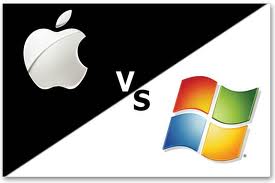
Apple Computer famously sues Microsoft Corporation for copyright infringement in its Windows operating system.
In November of 1985, after Apple’s board pushed out Steve Jobs, Microsoft released Windows 1.0 and Apple threatened to sue since they believed that Microsoft had stolen several design elements of the Macintosh operating system. Bill Gates took advantage of then Apple CEO John Scully’s lack of technology vision to get Apple to license certain parts of its Macintosh GUI to Microsoft. Scully did not foresee that the initial rudimentary version of Windows would be much of a threat of competing with the Macintosh operating system. The deal also ensured that Microsoft would continue to develop Word and Excel for Macintosh. However, when Microsoft released Windows 2.0 in December of 1997 and it had much more similarity to the look and feel of the Macintosh, Apple proceeded with a lawsuit.
What Apple’s lawyers failed to notice was that the license agreed to in 1985 covered all future Microsoft software and not just Windows 1.0. Therefore it was ruled that most of Apple’s copyright claims were covered by the license agreement. After a number of appeals, the legal battle ended when the Supreme Court denied Apple’s final appeal on February 21, 1995.
However, ongoing infringement questions regarding the graphical user interface were finally settled once and for all when Apple and Microsoft signed their famous cooperative agreement in August 1997. One reason that Microsoft agreed to the 1997 cross-licensing deal (in which it was rumored that Microsoft paid Apple up to $2 billion) was Apple’s increasingly large patent portfolio. Apple was allegedly preparing a multi-billion dollar lawsuit against Microsoft, in addition to their QuickTime patent infringement lawsuit filed in 1994. Apple began amassing their patent portfolio largely in response to their loss of this 1988 copyright infringement lawsuit, since they had not patented many of the original Macintosh operating system elements. This led to many other technology companies following suit and the technology patent “arms race” prevalent today.
Microsoft Goes Public
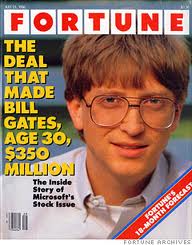
Ten years after the company’s founding, Microsoft Corporation stock goes public at $21 per share. The stock, which eventually closed at $27.75 a share, peaked at $29.25 a share shortly after the opening. It is said that the rising value of Microsoft stock has made an estimated 4 billionaires and 12,000 millionaires of Microsoft employees.
Windows 2000 Introduced
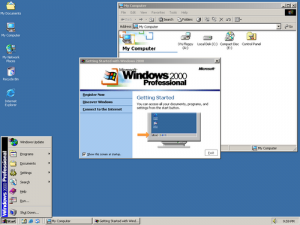
Microsoft introduces the latest version of the Windows NT line of operating systems, Windows 2000. While Windows 2000 did bring plug and play to the Windows NT line, it was targeted to the business market and not the consumer. It was not until Windows XP that Microsoft merged the NT line with the Windows 95/98 line. Unfortunately, Microsoft unleashed Windows ME upon unsuspecting consumers in the meantime. Sigh.
Genesis of “Vaporware”

The term “vaporware” is first used by Philip Elmer-DeWitt in a TIME magazine article. The term is now commonly used to describe software that has been long announced but hasn’t actually been released. At the time, many experts believed Microsoft was guilty of using vaporware announcements to keep customers from purchasing software from other companies (by convincing them that a Microsoft version was just around the corner).
Bill Gates Steps Aside
Microsoft chairman Bill Gates steps aside as chief executive and promotes company president Steve Ballmer to the position. Gates would stay on as “chief software architect” until June of 2008 before finally giving up day-to-day responsibilities at Microsoft. Gates is still Microsoft’s chairman of the board.
Friday the 13th Virus Gets Brits
The “Friday the 13th” virus strikes hundreds of IBM computers in Britain. This is one of the most famous early examples of a computer virus making headlines. Over twenty years later, while other companies have systems that are practically immune to virues, Microsoft still hasn’t been able to develop a solution to prevent viruses from infecting their systems.

